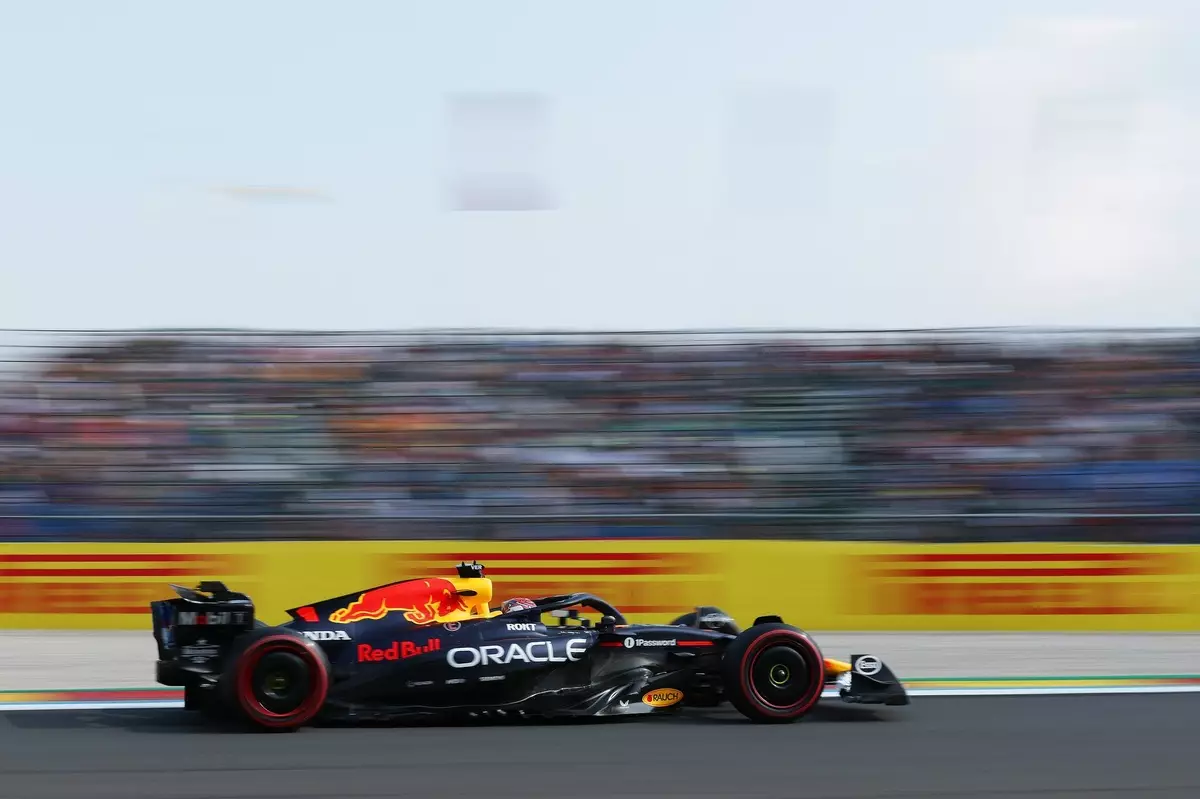In the high-stakes world of Formula 1, where milliseconds determine victory or defeat, the recent Belgian Grand Prix qualifying session vividly illustrated how even the most dominant teams face unexpected hurdles. Red Bull’s Max Verstappen, widely regarded as the unassailable king of the grid, found himself unexpectedly distant from pole position in a session he would have ideally dominated. This scenario underscores a fundamental truth: in F1, no driver or team is invincible, and relentless competition continues to reshape the landscape of performance standards. Verstappen’s inability to challenge Oscar Piastri due to a significant deficit in Sector Two signals a shift—one where the margin for error diminishes, and even the smallest speed drawbacks have outsized consequences.
This event also serves as a wake-up call to the Red Bull camp, which has long prided itself on superior aerodynamics, downforce, and straight-line speed. The notion that such a leading team can fall prey to a seemingly minor sector loss reveals how delicate the balance of efficiency and raw speed has become. It challenges the narrative that Red Bull’s engineering prowess grants everlasting dominance, emphasizing instead that continuous adaptation and refinement are essential in this evolving ecosystem.
Performance Gaps and the Myth of Absolute Supremacy
The session analysis showcases a fundamental reality: McLaren, with Oscar Piastri and Lando Norris, was at the forefront in all sectors. Despite their imperfect execution, they showcased remarkable car performance and driver finesse. Piastri’s near-miss for Q3 and Norris’s sixth-tenths deficit highlight that, even amidst technical hiccups and track limits violations, the team garnered a competitive advantage. This raises an important point—performance is no longer solely about outright speed but about consistency across tracks, the ability to execute under pressure, and strategic insight.
Red Bull, despite M. Marko’s assertions about “improvements” due to recent upgrades, still finds itself lagging behind. The sector time loss and the speed at the Fagnes corner demonstrate that precision and tire management are crucial. Verstappen’s commentary—that a five-tenths gap on pure lap time isn’t just about straight speed—undermines the simplistic notion that raw top speed is a panacea. Instead, it points to the nuanced interplay of aerodynamics, downforce, and track-specific setup choices. Red Bull’s dilemma: how much downforce should be sacrificed to enhance straight-line speed? The answer is complex, with each added kilogram of downforce potentially costing vital tenths on certain sections.
Looking at Piastri’s performance, it’s clear that McLaren has unlocked a rhythm that rivals or surpasses Red Bull’s, even if their cars aren’t the fastest in a straight line. This suggests a shift in the competitive hierarchy—drivers and teams are recalibrating, exploiting every possible nuance of the track, and making strategic compromises to optimize overall lap times.
Driver Development and Future Potential
The narrative around Yuki Tsunoda encapsulates the importance of driver development and team support. As Tsunoda trails Verstappen by significant margins in qualifying, the gap is not solely about skill but also equipment. His lack of recent upgrades underscores a strategic prioritization within Red Bull—focusing on Verstappen as the centerpiece of their performance model. Yet, Tsunoda’s persistent underperformance, despite ongoing efforts, hints at the difficult road many drivers face in bridging the gap to the sport’s elite.
From a broader perspective, this situation provokes questions about the long-term development of young drivers and whether current team strategies provide enough room for growth. Tsunoda’s frustration, expressed through small improvements yet persistent near-misses, is a reminder that progress in F1 is often incremental and fraught with setbacks. It also underscores the importance of stable, targeted upgrade programs that can elevate drivers’ confidence and lap time consistency.
Looking ahead to the sprint race, Marko’s cautious optimism about Tsunoda’s potential indicates an awareness that, while immediate improvements may be elusive, incremental gains could still influence race results. Ultimately, the true test of driver development in F1 lies in consistency, resilience, and the ability to capitalize on opportunities during the main race rather than just qualifying.
The Evolving Nature of F1 Competition
This qualifying session exemplifies a broader trend in Formula 1: the relentless pursuit of marginal gains and the unpredictability of outcomes. No longer can teams rest on laurels, assuming dominance will naturally follow from past successes. Piastri’s performance, Larson’s unexpected challenges, and Verstappen’s struggle all demonstrate that success depends on a complex mix of engineering innovation, driver skill, and strategic execution.
Furthermore, the session’s technical insights reveal much about where F1 racing is headed. The balancing act between aerodynamics and top speed highlights a shift toward more adaptable setups tailored to each circuit’s unique demands. Teams are now racing not just against rivals but also against the limits of their own engineering philosophies. The future belongs to those who can seamlessly navigate these intricacies, making intelligent compromises without sacrificing overall performance.
In the end, the Belgian GP qualifying served as a potent reminder: in Formula 1, victory is fleeting, and the competition is a constant game of adjustment and resilience. The teams that understand this new reality will be the ones to thrive amid the perpetual change, and those unable to adapt may find themselves overshadowed—even by drivers they once considered secondary. The sport’s true spectacle lies in this never-ending quest for perfection amidst chaos.

